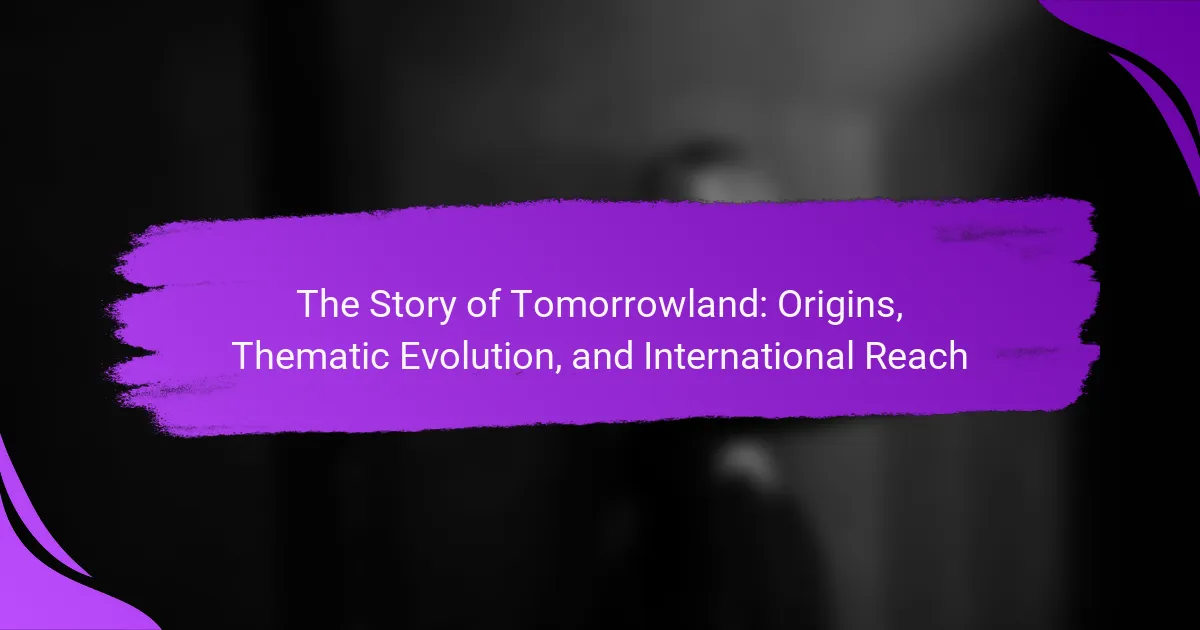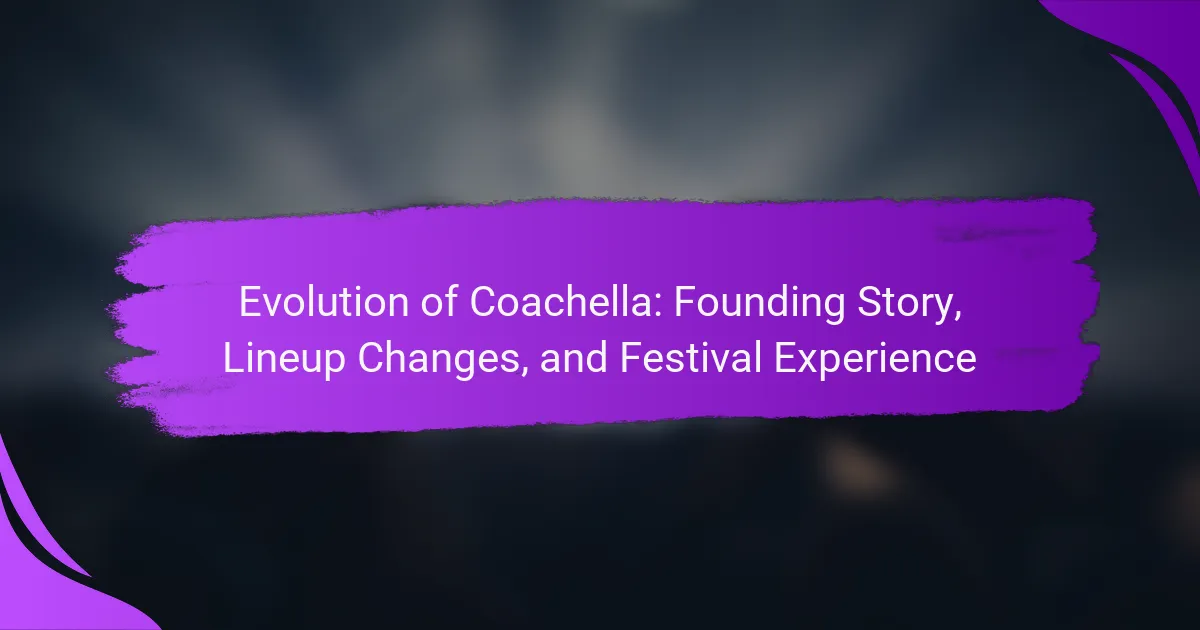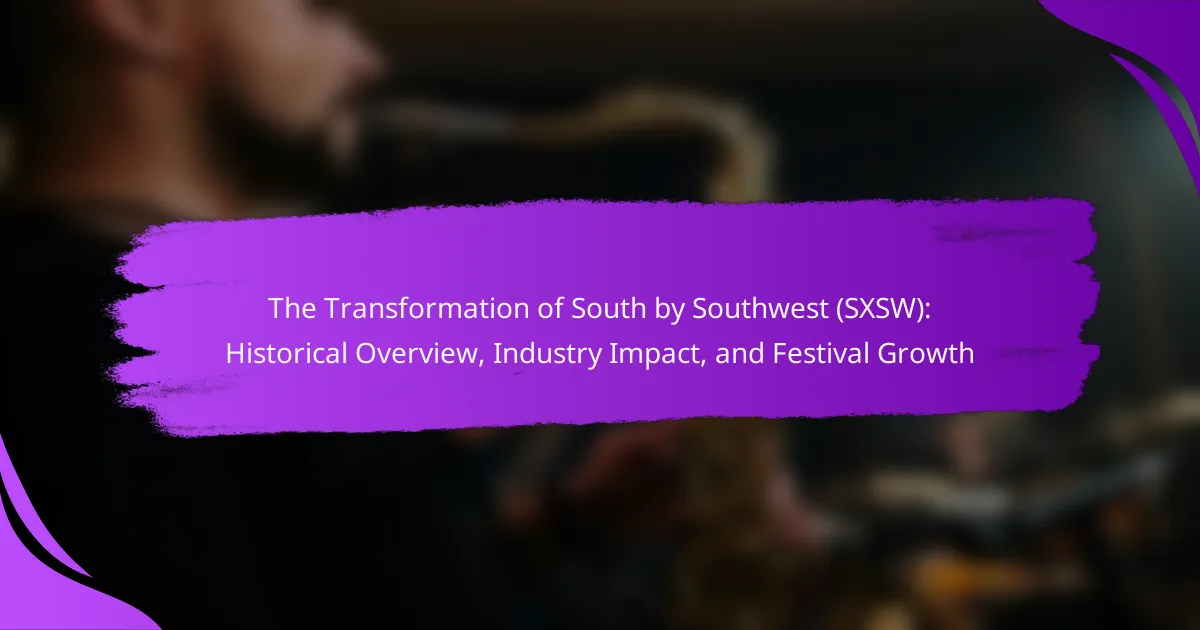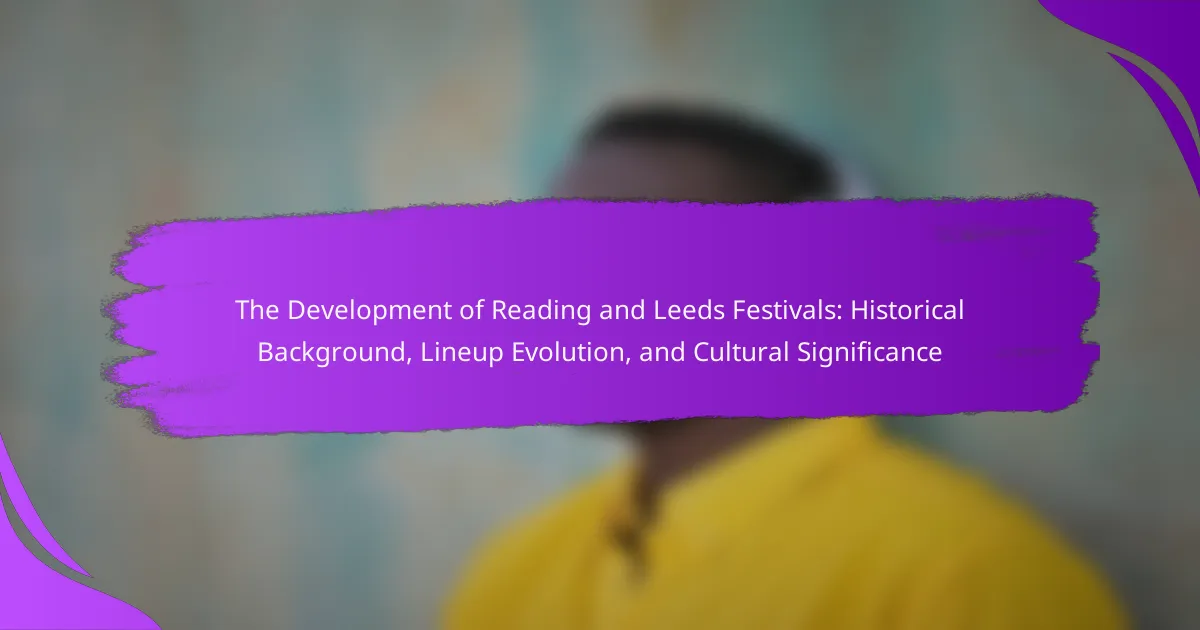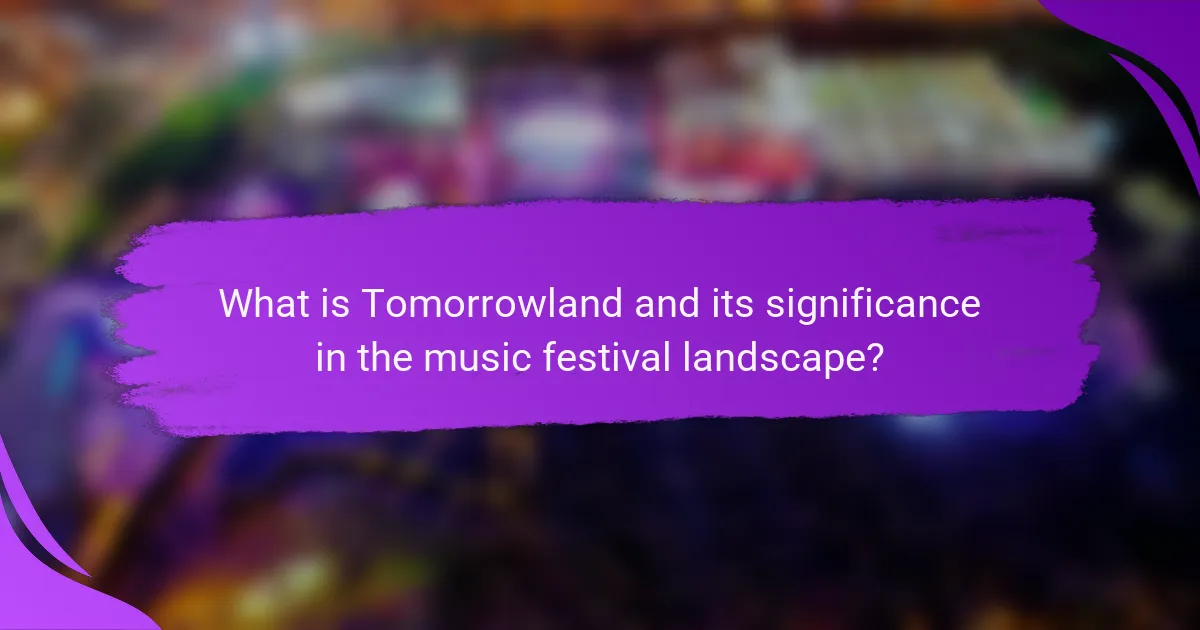
What is Tomorrowland and its significance in the music festival landscape?
Tomorrowland is a prominent electronic dance music festival held annually in Belgium. It is known for its elaborate stage designs and immersive themes. Since its inception in 2005, Tomorrowland has grown to become one of the largest music festivals globally. It attracts hundreds of thousands of attendees from various countries each year. The festival features top-tier DJs and artists, showcasing a wide range of electronic music genres. Tomorrowland’s significance lies in its influence on the global festival culture. It sets trends in production quality and audience experience. The festival also fosters a sense of community among music enthusiasts, promoting unity through music.
How did Tomorrowland originate and what were its initial themes?
Tomorrowland originated in 2005 in Boom, Belgium. The festival was created by the Belgian entertainment company We Are One World. Its initial themes focused on unity, love, and togetherness through music. The first edition featured a modest lineup of electronic dance music artists. The festival’s stage design was inspired by a fairy tale aesthetic. This theme was evident in the elaborate decorations and vibrant colors. Tomorrowland quickly gained popularity, leading to larger crowds in subsequent years. Its themes evolved to include more fantastical elements, reflecting a broader vision of a united global community.
What cultural influences shaped the early years of Tomorrowland?
The early years of Tomorrowland were shaped by various cultural influences, including post-war optimism and technological advancement. The 1950s was a period marked by a strong belief in progress and innovation. This was reflected in the design and themes of Tomorrowland, which celebrated space exploration and futuristic living. The space race, particularly the launch of Sputnik in 1957, fueled public interest in science and technology. Additionally, the influence of popular media, such as science fiction films and television shows, helped to cultivate a fascination with the future. Icons like Walt Disney promoted a vision of a utopian society through entertainment. These cultural elements combined to create an environment ripe for the establishment of Tomorrowland as a symbol of hope and possibility.
Who were the key figures involved in the establishment of Tomorrowland?
The key figures involved in the establishment of Tomorrowland are Michiel Beers, Manu Beers, and Annemie Beers. They are siblings who founded the festival in 2005. The first edition took place in Boom, Belgium. The festival has since evolved into one of the largest electronic dance music festivals in the world. The Beers family played a crucial role in its growth and development. Their vision was to create a unique experience centered around music and community. Tomorrowland’s success is largely attributed to their innovative approach and dedication.
What has been the evolution of themes at Tomorrowland over the years?
Tomorrowland has evolved its themes significantly since its inception in 2005. Initially, the festival’s theme was centered around a fairy tale concept, focusing on magic and fantasy. Each subsequent year introduced a unique theme, often inspired by mythical stories and vibrant visuals.
In 2012, the theme “The Book of Wisdom” marked a shift towards a narrative-driven approach, emphasizing storytelling through elaborate stage designs. The 2015 theme, “The Elixir of Life,” incorporated elements of alchemy and nature, showcasing a more organic aesthetic.
By 2019, the theme “The Book of Wisdom – Part II” revisited and expanded upon previous narratives, further enhancing the festival’s lore. The 2020 edition was set to explore “The Reflection of Love,” highlighting themes of unity and connection, although it was ultimately canceled due to the pandemic.
In 2021, Tomorrowland returned with “The Reflection of Love,” emphasizing love and togetherness through its visual and musical elements. This evolution reflects the festival’s adaptability and its ability to resonate with changing cultural sentiments.
How have the thematic elements changed from year to year?
The thematic elements of Tomorrowland have evolved significantly from year to year. Each festival introduces a unique theme that reflects current cultural trends and technological advancements. For instance, the 2018 theme “The Book of Wisdom” emphasized storytelling and adventure, while the 2022 theme “The Reflection of Love” focused on unity and connection. These shifts demonstrate Tomorrowland’s ability to adapt and resonate with its audience. The incorporation of cutting-edge stage designs and immersive experiences further enhances the thematic evolution. This progression is evident in the festival’s increased emphasis on sustainability and inclusivity in recent years.
What are some notable themes that have defined Tomorrowland’s identity?
Tomorrowland’s identity is defined by several notable themes. One prominent theme is unity and togetherness. The festival promotes a sense of community among attendees from diverse backgrounds. Another theme is fantasy and escapism. Tomorrowland creates immersive environments that transport visitors to magical realms. Additionally, the theme of music as a universal language is central. The festival showcases a variety of electronic music genres, appealing to a global audience. Sustainability is also a key theme. Tomorrowland has implemented eco-friendly practices at its events. Each of these themes contributes to the festival’s unique identity and global appeal.
Why is Tomorrowland considered a global phenomenon?
Tomorrowland is considered a global phenomenon due to its unparalleled scale and cultural impact. The festival attracts over 400,000 attendees from more than 200 countries each year. It features world-renowned DJs and elaborate stage designs that create a unique experience. Tomorrowland’s immersive themes and storytelling resonate with a diverse audience. The festival’s strong online presence amplifies its reach, with millions of views on live streams. Additionally, Tomorrowland has expanded internationally, hosting events in countries like the United States and Brazil. This expansion further solidifies its status as a global brand in the electronic music scene.
What factors contributed to Tomorrowland’s international expansion?
Tomorrowland’s international expansion was driven by strategic branding and partnerships. The festival leveraged its strong brand identity to attract global audiences. Collaborations with international promoters facilitated entry into new markets. Additionally, the rise of electronic dance music (EDM) increased global interest in music festivals. Tomorrowland’s unique thematic elements created a distinctive experience that appealed to diverse cultures. The use of high-quality production and immersive environments set it apart from competitors. Furthermore, effective marketing strategies, including social media campaigns, enhanced its global reach. These factors combined to establish Tomorrowland as a leading global festival brand.
How does Tomorrowland engage with diverse cultures around the world?
Tomorrowland engages with diverse cultures through its global festival presence and thematic diversity. The festival hosts international editions in various countries, including Belgium, Brazil, and the United States. Each event incorporates local cultural elements into its programming and design. Tomorrowland features artists from various genres and backgrounds, promoting cultural exchange. The festival’s stages and decorations often reflect global themes, enhancing cultural appreciation. Additionally, Tomorrowland collaborates with international brands and local communities to enrich the festival experience. This approach fosters a sense of unity among attendees from different cultural backgrounds.
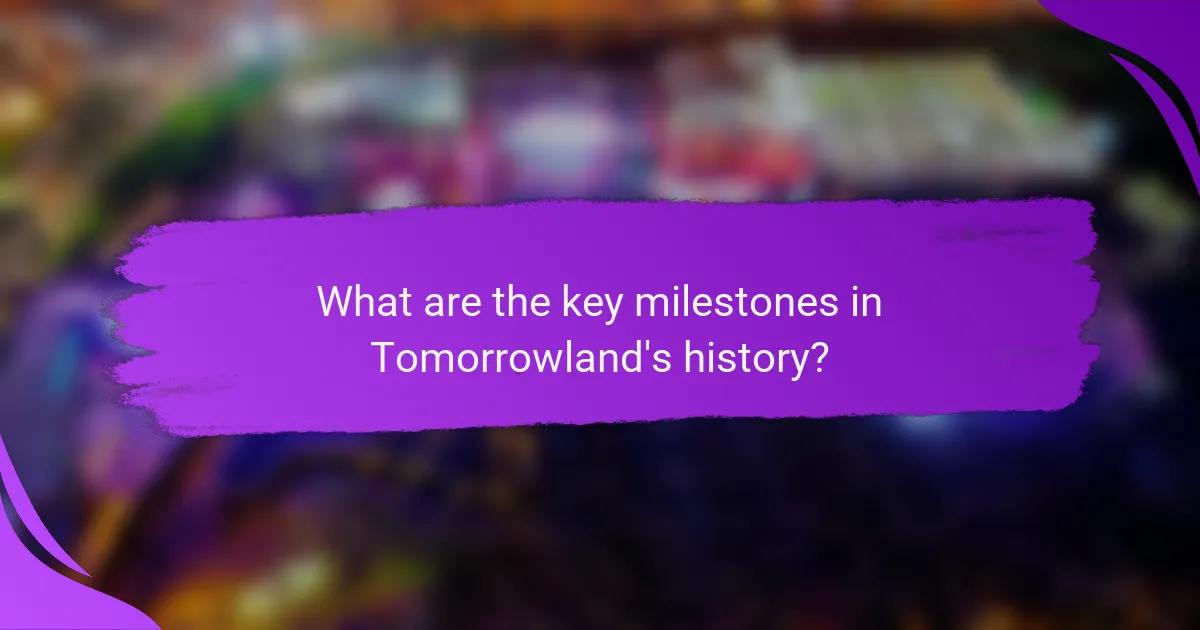
What are the key milestones in Tomorrowland’s history?
Tomorrowland’s history includes several key milestones. The festival began in 2005 in Boom, Belgium. It featured a small lineup and attracted around 9,000 attendees. In 2012, Tomorrowland expanded significantly, hosting 180,000 visitors over two weekends. The festival introduced elaborate stage designs, enhancing its reputation. In 2013, Tomorrowland launched its first international edition in Brazil. This marked its global expansion. The 2019 edition celebrated the festival’s 15th anniversary with a special theme. Tomorrowland’s history showcases its growth from a local event to a global phenomenon.
How has Tomorrowland’s growth reflected changes in the music industry?
Tomorrowland’s growth mirrors significant changes in the music industry, particularly in electronic dance music (EDM). The festival began in 2005 with a modest attendance of 10,000 people. By 2019, attendance surged to over 400,000 across two weekends. This dramatic increase reflects the rising popularity of EDM globally.
Tomorrowland’s elaborate stage designs and immersive experiences set a new standard for live music events. The festival’s expansion to international locations, such as Tomorrowland Unite, showcases the globalization of music festivals. The growth of digital streaming platforms has also contributed to Tomorrowland’s success. Artists featured at Tomorrowland often gain international recognition through these platforms.
Additionally, the festival’s partnerships with major brands highlight the commercialization of music culture. Tomorrowland’s evolution illustrates how festivals have become essential in an artist’s marketing strategy. The festival’s ability to adapt to changing musical trends demonstrates its relevance in the dynamic music industry landscape.
What role has technology played in shaping the Tomorrowland experience?
Technology has significantly enhanced the Tomorrowland experience. It has transformed how attendees interact with the festival’s environment. Advanced sound systems create immersive audio experiences across the festival grounds. Cutting-edge visual effects elevate performances, making them more engaging. Live streaming technology allows fans worldwide to experience the festival remotely. Additionally, mobile apps provide real-time information and personalized schedules for attendees. Innovations in stage design incorporate interactive elements, increasing audience participation. These technological advancements contribute to Tomorrowland’s reputation as a premier electronic music festival.
How have partnerships and sponsorships influenced Tomorrowland’s development?
Partnerships and sponsorships have significantly influenced Tomorrowland’s development by providing essential financial support and enhancing its global reach. Major brands like Budweiser and Coca-Cola have invested in the festival, allowing for elaborate stage designs and improved production quality. These partnerships have also facilitated innovative marketing strategies, attracting a diverse audience from various countries. Sponsorships enable Tomorrowland to create unique experiences, such as themed stages and interactive installations. Furthermore, collaborations with renowned artists and DJs have elevated the festival’s status in the electronic music scene. This financial backing has allowed Tomorrowland to expand its footprint internationally, leading to events in locations like Brazil and the United States. The influence of partnerships and sponsorships is evident in the festival’s growth and its ability to remain a leader in the global music festival landscape.
What are the notable collaborations and performances at Tomorrowland?
Tomorrowland features notable collaborations and performances from world-renowned artists. Each year, the festival showcases exclusive sets and unique back-to-back performances. Collaborations often include DJ pairings, such as Dimitri Vegas & Like Mike with major artists. These performances create memorable moments and unique musical experiences for attendees. The festival has hosted iconic acts like Armin van Buuren, Tiësto, and David Guetta. Additionally, Tomorrowland has featured themed stages that enhance the collaborative spirit. The festival’s lineup consistently includes a mix of genres, showcasing both established and emerging talent. Each performance contributes to Tomorrowland’s reputation as a premier electronic dance music festival.
Which artists have made significant contributions to the festival’s reputation?
David Guetta, Armin van Buuren, and Tiësto have made significant contributions to Tomorrowland’s reputation. These artists are known for their iconic performances at the festival. David Guetta helped popularize electronic dance music globally. Armin van Buuren has been a consistent headliner, attracting massive crowds. Tiësto was one of the first big names to perform, enhancing the festival’s prestige. Their unique styles and high-energy sets have drawn international attention. Each artist has played a key role in shaping the festival’s identity. Their contributions have solidified Tomorrowland’s status as a premier electronic music event.
How do these collaborations enhance the overall festival experience?
Collaborations enhance the overall festival experience by integrating diverse artistic elements. These partnerships bring together various genres, creating a rich auditory landscape. Collaborations also foster unique performances that are exclusive to the festival. For example, artists often create special sets or remixes for the event. This exclusivity generates excitement among attendees. Additionally, collaborations can involve visual artists, enhancing the festival’s aesthetic appeal. The combined talents lead to memorable experiences that resonate with the audience. Festivals like Tomorrowland thrive on these partnerships, making them a key aspect of their success.
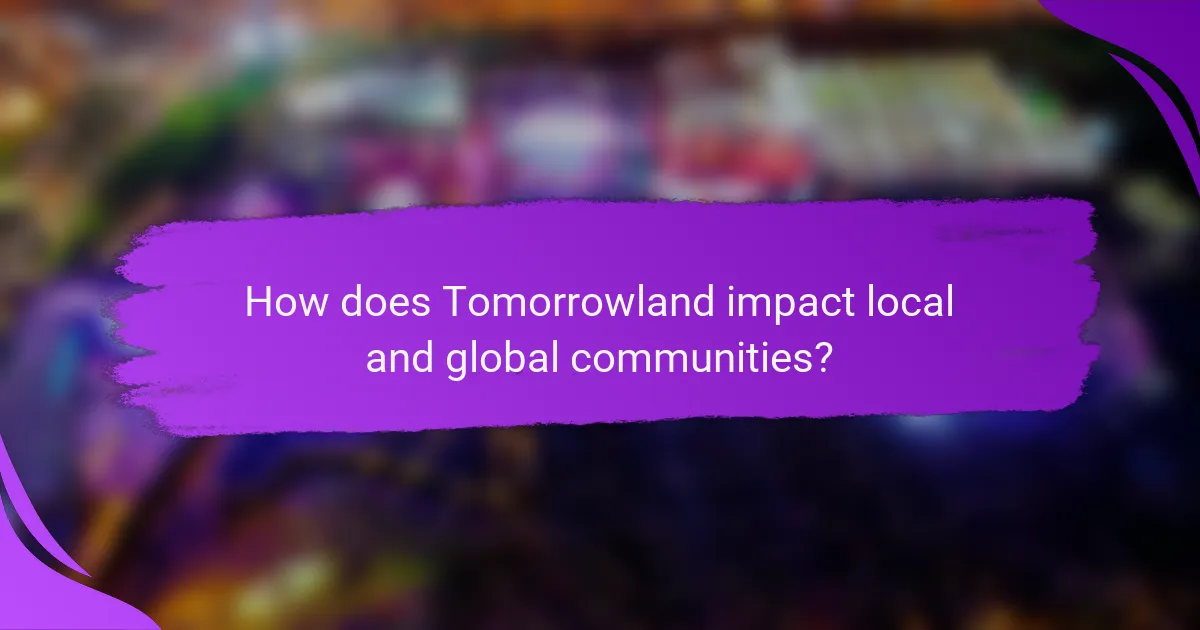
How does Tomorrowland impact local and global communities?
Tomorrowland significantly impacts local and global communities through economic, social, and cultural contributions. Locally, the festival generates substantial revenue for businesses in the host city. In 2019, it was reported that Tomorrowland contributed over €100 million to the local economy. This influx supports hotels, restaurants, and transportation services.
Socially, the festival fosters a sense of community among attendees. It unites people from diverse backgrounds, promoting cultural exchange and understanding. The event’s values of peace and love resonate globally, encouraging positive social interactions.
Culturally, Tomorrowland influences the electronic music scene worldwide. It showcases emerging artists and trends, shaping music preferences across different regions. Additionally, the festival’s themes often reflect global issues, raising awareness and inspiring action among its audience.
Through these avenues, Tomorrowland leaves a lasting impact on both local and global communities.
What economic benefits does Tomorrowland bring to its host locations?
Tomorrowland generates significant economic benefits for its host locations. The festival attracts hundreds of thousands of attendees each year. This influx of visitors boosts local businesses, including hotels, restaurants, and shops. In 2019, Tomorrowland brought an estimated €110 million to the local economy of Boom, Belgium. Employment opportunities also increase due to the festival’s demand for temporary staff. Additionally, local infrastructure often receives upgrades to accommodate the event. These factors collectively enhance the economic landscape of the host region.
How does Tomorrowland promote sustainability and social responsibility?
Tomorrowland promotes sustainability and social responsibility through various initiatives. The festival implements a comprehensive waste management program. This program includes recycling and composting efforts to minimize landfill waste. Tomorrowland also emphasizes the use of renewable energy sources. For instance, the event is powered by solar energy and biofuels.
Additionally, Tomorrowland collaborates with local organizations to support community projects. These projects focus on environmental conservation and social well-being. The festival actively promotes awareness of sustainability issues among attendees. This is achieved through educational workshops and informational displays.
Moreover, Tomorrowland has committed to reducing its carbon footprint. They track and report their environmental impact annually. This data helps improve future sustainability efforts. Overall, Tomorrowland’s commitment to sustainability and social responsibility is evident in its operational practices and community engagement.
What initiatives does Tomorrowland support within local communities?
Tomorrowland supports various initiatives within local communities, focusing on social responsibility and sustainability. The festival promotes local cultural projects by collaborating with regional artists and organizations. It also invests in environmental initiatives, such as waste reduction and renewable energy use. Tomorrowland engages in educational programs aimed at youth development and empowerment. Additionally, the festival contributes to local economies by boosting tourism and creating job opportunities. These efforts reflect Tomorrowland’s commitment to fostering positive community impact.
What are the future prospects for Tomorrowland?
Tomorrowland’s future prospects appear positive. The festival continues to expand its international presence. Recent editions in locations like Brazil and France have seen significant attendance growth. Tomorrowland’s commitment to innovative themes keeps it relevant. The incorporation of technology enhances the attendee experience. Collaborations with top artists maintain its status in the electronic music scene. Sustainability initiatives are being integrated into festival operations. These factors suggest a strong trajectory for Tomorrowland in the coming years.
How is Tomorrowland adapting to changing audience preferences?
Tomorrowland is adapting to changing audience preferences by diversifying its musical lineup and enhancing the festival experience. The festival now features a wider range of genres beyond electronic dance music. This change caters to a broader audience demographic. Tomorrowland also emphasizes sustainability and eco-friendly practices. Initiatives include waste reduction and renewable energy usage. The festival has increased its digital presence through virtual experiences. This adaptation allows for global reach and engagement with fans unable to attend in person. Additionally, Tomorrowland has implemented interactive elements, such as mobile apps and social media integration. These efforts reflect a commitment to evolving with audience expectations and preferences.
What innovations can we expect in future editions of Tomorrowland?
Future editions of Tomorrowland are expected to feature advanced technology integration. This includes augmented reality experiences that enhance attendee interaction. Additionally, sustainability initiatives will likely be prioritized, aiming for zero waste and eco-friendly materials. The festival may also introduce AI-driven personalized experiences for attendees. Innovations in stage design are anticipated, with dynamic visuals and immersive environments. Collaborations with cutting-edge artists and technologists will further elevate the festival’s creativity. Enhanced safety measures using technology for crowd management are also expected. These innovations align with global trends in event management and audience engagement.
What tips can attendees follow to maximize their Tomorrowland experience?
To maximize their Tomorrowland experience, attendees should plan their schedule in advance. Research the lineup and set times for performances. Arrive early to secure a good spot for popular acts. Stay hydrated and take breaks to avoid fatigue. Explore all stages and themed areas for a full experience. Engage with the festival’s interactive art installations. Use the official Tomorrowland app for real-time updates. Connect with fellow festival-goers to enhance the social experience.
Tomorrowland is a major electronic dance music festival held annually in Belgium, known for its elaborate stage designs and immersive themes. Since its inception in 2005, it has grown into one of the largest music festivals worldwide, attracting over 400,000 attendees from more than 200 countries. The article will explore Tomorrowland’s origins, thematic evolution, and international expansion, highlighting key figures involved in its establishment, notable themes that define its identity, and its impact on local and global communities. Additionally, it will discuss the festival’s economic contributions, sustainability initiatives, and future prospects in the evolving music industry landscape.
